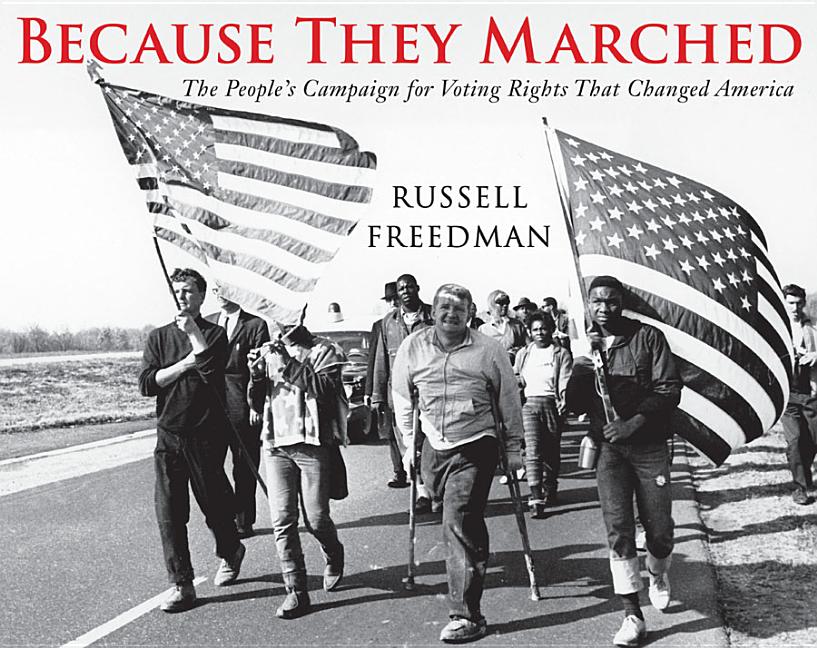Book Descriptions
for Because They Marched by Russell Freedman
From Cooperative Children's Book Center (CCBC)
The Voting Rights Act signed into law in August, 1965, was the result in part of direct action taken on the roads of Alabama earlier that year. Russell Freedman’s account summarizes the years of previous voting rights efforts before focusing on the intensifying standoffs in Alabama between activists and law enforcement. The first attempt to march from Selma to Montgomery for voting rights took place on March 7, a day that became known as “Bloody Sunday” when demonstrators were gassed and beaten. The Turnaround Tuesday march two days later was carefully planned to make the point that marchers would not defy a court order but also would not back down: Martin Luther King Jr. led 1,500 people over the Edmund Pettus bridge, where they all kneeled in prayer before returning to Selma. By the time the march launched a third time, on March 21, there was national and international attention focused on Selma and, five days later, Montgomery, with the triumphant arrival of 25,000. Freedman’s account includes individual stories of courage, commitment, and loss, while his essential epilogue notes the recent Supreme Court decision striking down a key provision of the Voting Rights Act, stating that “the meaning of American democracy remains a topic of debate and struggle.” (Age 13 and older)
CCBC Choices 2015. © Cooperative Children's Book Center, Univ. of Wisconsin - Madison, 2015. Used with permission.
From the Publisher
"To commemorate the 50th anniversary of the 1965 march for voting rights from Selma to Montgomery, Alabama, Newbery Medalist Freedman presents a riveting account of this pivotal event in the history of civil rights. In the early 1960s, tensions in the segregated South intensified. Tired of reprisals for attempting to register to vote, Selma's black community began to protest. The struggle received nationwide attention when Dr. Martin Luther King, Jr. led a voting rights march in January, 1965, and was attacked by a segregationist. In February, the shooting of an unarmed demonstrator by an Alabama state trooper inspired a march from Selma to the state capital of Montgomery. The march got off to a horrific start on March 7 as law officers attacked peaceful demonstrators. Broadcast throughout the world, the violence attracted widespread outrage and spurred demonstrators to complete the march at any cost. On March 25, after several setbacks, protesters arrived at the end of the fifty-four-mile march to a cheering crowd of 25,000 supporters. Illustrated with more than forty photographs, this is an essential chronicle of events every American should know. Includes timeline, source notes, photo credits, bibliography, index."--Publisher's description.
Publisher description retrieved from Google Books.


